All posts by Becky Herrmann
About Becky Herrmann
Becky has been the Library Director since March of 2001. View Becky's complete profile. View all posts by Becky Herrmann →
Bibliobites-Trying Something New for June
Due to the ongoing pandemic and limited library service, this month the group members challenged each other to try to cook something new, difficult, or out of our comfort zone. Those present approached the situation from many different vantage points.
 One member chose to make a Chocolate Biscuit Cake for her husband’s birthday. The recipe had been recommended by her sister, and apparently is a favorite of Prince Harry and Meghan. It was easy to make and delicious and consisted of not much more than rich tea biscuits (remember, this means “cookies” to us) that she found at Wegmans – the McVitie’s brand. The only caveat was that the cake needs to chill for two days. Click here for a similar recipe to try.
One member chose to make a Chocolate Biscuit Cake for her husband’s birthday. The recipe had been recommended by her sister, and apparently is a favorite of Prince Harry and Meghan. It was easy to make and delicious and consisted of not much more than rich tea biscuits (remember, this means “cookies” to us) that she found at Wegmans – the McVitie’s brand. The only caveat was that the cake needs to chill for two days. Click here for a similar recipe to try.
Another member cooked from both the “Boston Globe” and the “Moosewood Cookbook.” From the former came grilled eggplant planks with harissa (courtesy of Trader Joe’s). From the latter came a traditional tabbouleh recipe that featured tomatoes, feta, mint, and parsley. The recipe is available online, allows for many permutations, and chickpeas were added in the second day. Spaghetti carbonara was another offering by this cook, and her trick was to mix the cheese and eggs together before adding to the spaghetti. This cook’s final experiment was rice pudding from scratch. She made it with medium grain rice, but it was too chewy, and she suggested using long grain rice for the next try.
Another person in the group took the “Chopped” approach and decided to see how many ways she could use blueberries, and surprisingly, there were more savory offerings than sweet. They included lemon blueberry whoopie pies with a cream cheese filling, a blueberry balsamic dressing that was good, but turned things like hard boiled eggs a disconcerting purple, chicken with a blueberry sauce, and then repurposed/enhanced salad dressing which was poured over a pork tenderloin.
This chef also followed the helpful hint of keeping fresh ginger in the fridge by preserving it in vodka. Another member stated that she peels, chops, and freezes fresh ginger with good results.
An almond milk drinker in the group issued herself a challenge to make soy milk from scratch. This was a labor intensive process that produced mediocre taste results. One must get the husks off of the dry soy beans first, and the mediocre taste was likely due to the lack of added sweeteners that usually go into commercial products. This same pioneer-style chef then chose to find a use for the leftover soybean pulp, and found that you could make okara (soy bean pulp) hummus, and vegan crab cakes. She made the latter, and they came out well.
 Another member, who is sharing cooking responsibilities with her 24 year old son, who happens to be caught home during this pandemic, made a broccoli soufflé (which stayed fluffy), and Beef Wellington for the first time. The latter was from “The Joy of Cooking,” and she also made the liver pate/mushroom spread that coats the beef from scratch. Since this chef knows her weaknesses, she didn’t attempt to make the puff pastry from scratch; the Wellington was delicious. The son made pasta from scratch twice, and has become the master of the brined, spatchcocked and grilled whole chicken.
Another member, who is sharing cooking responsibilities with her 24 year old son, who happens to be caught home during this pandemic, made a broccoli soufflé (which stayed fluffy), and Beef Wellington for the first time. The latter was from “The Joy of Cooking,” and she also made the liver pate/mushroom spread that coats the beef from scratch. Since this chef knows her weaknesses, she didn’t attempt to make the puff pastry from scratch; the Wellington was delicious. The son made pasta from scratch twice, and has become the master of the brined, spatchcocked and grilled whole chicken.
Our last member made socca, which is a Genoan street food, but in this case, served as a chickpea pancake crust for pizza. It is made from chickpea flour, EVOO, water, and salt. After it sits, it is spread in a cast iron pan and placed under the broiler till it gets firm, and then toppings are added, and it is then cooked longer. The recipe used included summer squash which is abundant in gardens now.
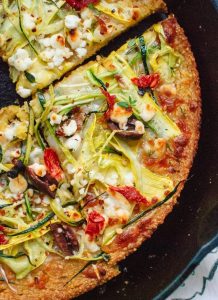 Here is a sample picture of socca and the link.
Here is a sample picture of socca and the link.
In the world of miscellany, one member mentioned the usefulness of her Wifi smart meat thermometer – www.meater.com. Another member cited the usefulness of “the Bug Bite Thing” – www.bugbitething.com, since many of us are spending more pandemic time outside. Thai on the Fly was mentioned as a place that does takeout easily and well. Finally, a member had been drawn in by this cookbook title and had purchased it: Procrastibaking: 100 recipes for getting nothing done in the most delicious way possible by Erin Gardner. -(This title is also available for download from Overdrive, the library’s downloadable book service)
Join us next month on Friday, July 31st at 11 AM as we explore African-American cuisine. As we try to make sense of a world where systemic racism is the norm, one way that we can understand the roots of it is to educate ourselves. The library has a list of resources available to do this https://www.chelmsfordlibrary.org/category/reading-room/page/2/ but our Bibliobites group wanted to dig a little deeper. Reading about Black food history and customs, cooking some African American recipes and celebrating Black food culture will be the focus for July. To help in your exploration, there is an Epicurious list here: https://www.epicurious.com/expert-advice/a-reading-list-for-learning-about-race-and-food-article
Another virtual resource, that is always available with your library card is Hoopla – use https://www.hoopladigital.com/genre/917231993 for a link to a search of soul food and this one https://www.hoopladigital.com/genre/917231859 for a link to cooking from the Southern States – you have to pick and choose in this last search, as some are simply Southern cooking and not African American cooking. Let us know what you find in your cooking journey and join us for our next Zoom meeting – contact Becky Herrmann to get the meeting link! Enjoy!
Special thanks to Maggie Marshall for taking notes this past month!
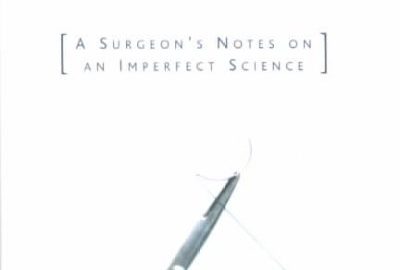
Monday Evening Book Group Postmortem
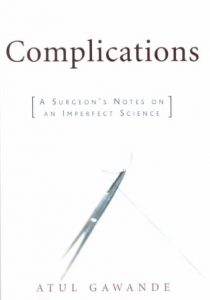 On May 2nd, the Evening Book Group discussed Complications: A Surgeon’s Notes on an Imperfect Science by Atul Gawande. We had intended to read his more recent bestseller Being Mortal, but it was still too popular to get enough copies – several members were able to read that title though and shared additional thoughts in the discussion.
On May 2nd, the Evening Book Group discussed Complications: A Surgeon’s Notes on an Imperfect Science by Atul Gawande. We had intended to read his more recent bestseller Being Mortal, but it was still too popular to get enough copies – several members were able to read that title though and shared additional thoughts in the discussion.
Comments about Complications ranged from “I am glad I am not going to the hospital anytime soon” – to “I don’t even want a resident in the room!” — One of our members works in the medical education department at Lahey Clinic and she felt that the information in Complications was outdated – (It was written in 2002) – She did feel like it was true to life though in many respects. One area she pointed to that was outdated was how the hospitals identify and treat doctors that go wrong – she said that there is much better tracking these days and repetitive errors are noticed and the physicians are held accountable.
We discussed the God complex that patients bestow upon their physicians and that doctors are not super heroes; they are fallible people just like the rest of us. Indeed Gawande pointed out doctors’ fallibility so often that comments ranged from “I am glad I am not going to the hospital anytime soon” – to “I don’t even want a resident in the room” We talked about the change in the perception of doctors and medicine over the years. Once patients felt that doctor was always right and he/she made the decisions and now there is much more patient self-advocacy, more choices and the patient is often the leader in their own care. We emphasized the need in a complex world to be advocates for our own health.
We discussed how recently The Checklist Manifesto (also by Gawande) was written and how little procedural doctrine existed before it. We went from very little accountability to being bar-coded when we enter the door of the hospital. There was some discussion and advocacy for the use of computers to replace simple tasks that could be prone to human error – as algorithm has no emotions.
Many of us shared our own experiences in the OR – the way that some surgeons play loud music and a party atmosphere when operating. While that made some of us nervous, one group member remarked that we should only worry when we could hear a pin drop – that would likely be a signal that things are not okay.
We talked about the pros and cons of seeking out specialists versus developing a relationship with a primary care physician who would develop a holistic approach to assessing your health. We want doctors who develop relationships versus a transaction or procedure. The errors that occur when doctors treat but do not consider lifestyle issues when handing out prescriptions and recommendations are staggering. And these errors take their toll: http://www.npr.org/sections/health-shots/2016/05/03/476636183/death-certificates-undercount-toll-of-medical-errors
One group member spoke about the fact that we as a people cannot handle the fact that we will die. With all the medical advances, we have taken it so far – people are living longer and often we are not content with doing nothing in the face of illness, even if it might be the best choice. Medicine has become the cure-all — Chemo, radiation, surgery- doctors offer it all, often allowing hope to triumph over reason. “It is the rare doctor who will say there is nothing we can do for you.” We could use more doctors who aren’t afraid to say “I don’t know.”
With health insurance covering the bulk of major expenses, our out of pocket expenses – while costly, do not preclude most folks from pursuing all avenues to be treated. When considering a procedure, if cost was an issue, would we have had it done then?
One member remarked that we believe there is a “vending machine for life – keep putting in the coins and it will keep spitting out choices/options- some of them worse than life itself. Medicine is not ultimately a magic bullet . You are not a vampire; you will die – stop pretending that it is not going to happen.”
We also talked about the idea of hosting a program based on the Death Cafe – held all over the world – where a discussion of death issues, mortality, end of life care, wills, etc. would be the focus. For those interested, here is a link for Cafes held near Chelmsford: Death Cafe
Also mentioned, not so facetiously, was that we have baby showers and wedding showers – where are the death showers?
Particular sections that were of interest in the book were
- Gawande’s candor when discussing his own mistakes
- The Flesh-eating bacteria chapter
- The details about the M&N meetings
- Hands in the water experiment
We also discussed:
- Pharmaceutical companies — “We want you sick and alive for a long time”-
- An episode of This America Life – http://www.thisamericanlife.org/radio-archives/episode/585/in-defense-of-ignorance?act=1#play
- A historical epitaph mentioned during the discussion – click here for details.
- The untimely death of Prince
Next meetings are June 6th to discuss The Children Act by Ian McEwan and June 20th – to select the titles for next year’s list. Hope to see you there!
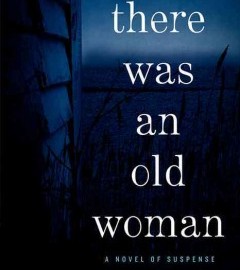
There Was an Old Woman: Evening Book Group
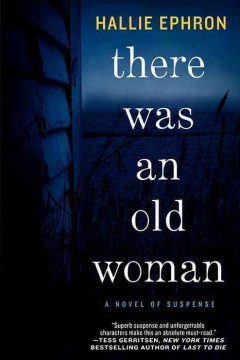 A dedicated group of book club members braved the spring storm on Monday, April 4th to discuss There Was an Old Woman by Hallie Ephron – one of the three selections Chelmsford is reading as part of this year’s One Book Chelmsford‘s focus on suspense. It is a subtly suspenseful story of two women dealing with the past, Evie as part of her job as the antiquities specialist at the Five Boroughs Historical Society and the other, Mina as a 90 year old looking back on her life. Set in an imaginary but completely realized part of the Bronx, Ephron’s strong sense of place roots the novel and places the reader firmly in her world.
A dedicated group of book club members braved the spring storm on Monday, April 4th to discuss There Was an Old Woman by Hallie Ephron – one of the three selections Chelmsford is reading as part of this year’s One Book Chelmsford‘s focus on suspense. It is a subtly suspenseful story of two women dealing with the past, Evie as part of her job as the antiquities specialist at the Five Boroughs Historical Society and the other, Mina as a 90 year old looking back on her life. Set in an imaginary but completely realized part of the Bronx, Ephron’s strong sense of place roots the novel and places the reader firmly in her world.
The suspense comes with the situations – Evie returns home to help with her alcoholic mother whose house has quickly and illogically devolved into a hovel and whose health has declined much more rapidly than anticipated; Mina struggles with aging while her nephew badgers her to sell her house and move into assisted living. Hardly the stuff mysteries are made of – but the drama in this story centers on conspiracy and a crime committed years ago. Someone wants to take over this land. And they will stop at nothing to accomplish their purpose – house after house in this small neighborhood has been mysteriously purchased and razed soon after residents moved or passed away. Could there be foul play involved in so many residents dying in such a short frame of time?
We discussed the difference between a whodunit mystery and a suspense novel – how a mystery depends on events to sweep you along, that your job is to untangle the clues and solve the mystery while a suspense novel often shares with you most of the information you need while involving you in the character’s lives. The suspense comes from watching (sometimes in horror, sometimes with pride) these characters muddy up their lives and ultimately come to resolution. Suspense often revolves around the characters, mystery centers on the plot.
This novel also spawned a discussion of aging and the vulnerability of the elderly and how easily they are preyed upon. Mina was a feisty character who we simultaneously admired and felt protective of. The group felt that this was a pleasant novel with characters we cared about but the plot was predictable and the suspense a bit too subtle. The writing was solid and the setting details brought on a wash of childhood memories. There was some disagreement about Finn, the storekeeper’s son and whether he was a good guy at heart and simply misguided or a creep. The optimist in the group felt he was redeemable. Many appreciated the insertion of real-life historical details into the plot including the tale of the World War II plane that hit the Empire State Building and the elevator crash that real life Betty Lou Oliver and the fictional Mina survived. Readers felt that Ephron cleverly wove these details into the plot.
We are all looking forward to hearing Hallie Ephron speak, along with Hank Phillipi Ryan on May 5th at the library – if you are interested, please register on our calendar.
Books mentioned during our discussion:
- The Guest Room by Chris Bohjalian
- Honky Tonk Samurai by Hap Leonard/Joe R. Lansdale
- Redemption Road by John Hart
- Common Ground by J. Anthony Lukas
- American Housewife by Helen Ellis
- Also mentioned which might be of interest was the documentary of Nora Ephron recently aired on HBO
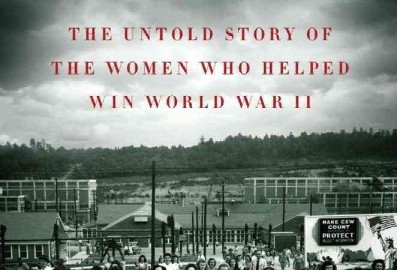
Forbidden to Talk: Women Who Helped Win World War II
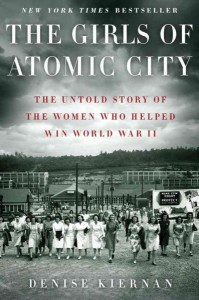 At a recent meeting of the Monday Night Book Group, members discussed The Girls of Atomic City : The Untold Story of the Women Who Helped Win World War II by Denise Kiernan.
At a recent meeting of the Monday Night Book Group, members discussed The Girls of Atomic City : The Untold Story of the Women Who Helped Win World War II by Denise Kiernan.
Kiernan takes a new look at the history of Oak Ridge, Tenn., a city conceived and built as part of the atomic bomb program. This hidden city had a population of 75,000 and covered 80,000 acres of mountain woodland. It was built as part of the Manhattan Project during World War II. Oak Ridge was the site of tremendous factories, where workers separated uranium isotopes in preparation for the creation of the atomic bomb. Kiernan collected oral histories from town residents and from ten women who held various jobs in Oak Ridge – cleaning floors, operating machines, taking dictation and performing engineering experiments.
The folks who worked in this secret city were kept in the dark about what they were working on. They were forbidden to discuss their work with anyone,including each other. It was not till the first atomic bomb was released that residents became aware of the magnitude of the scientific event that they had been part of. The book moves back and forth between the stories of the women workers and development of atomic fusion and shares with us the discrimination, racial segregation and sexism that the women endured during this project.
Book group members generally liked this book and enjoyed the glimpse into a little-known piece of history. Some thought the back and forth narratives were confusing and made the reading choppy – although the typeface changes in the text did help to identify the switches in narrative.
The scientific information interspersed with the stories of the women was the most appealing part of the book to some and an excuse to skip ahead for others. The book reminded one reader of The Immortal life of Henrietta Lacks by Rebecca Skloot but she felt it lacked the emotional depth and the scientific details that she enjoyed so much in Skloot’s narrative. Others felt that there were too many featured women; the story would have been easier to relate to if the author had focused on just one or two women.
However, the author did a good job at making you feel that you were there. The horrific living conditions, houses slapped up in a day, women bunking together in small spaces and the endless mud were described well. As most of the residents of Oak ridge were young people, the details about their dating rituals, the dances they attended and the ways they sought entertainment were fun to read. Readers also appreciated the social history Kiernan shared – the disparity in treatment between the black and the white populations, inequality between the men and the women.
One side story that caught the attention of many readers was the tale of an African American man, Ebb Cade, who was in a car accident that broke both of his legs. Once in the hospital, he was held without setting his fractures while the scientists used him as a human guinea pig, injecting him with low doses of plutonium to study the effect. Researchers collected urine, feces, and tissue samples, and removed 15 of his teeth. He died eight years later, reportedly from heart failure.
We also discussed the high level of patriotism in the country at the time. Folks did not ask a lot of questions, they were just glad to do something for their country and as it was post-depression era, they were also just grateful to get a job.
Readers felt that this was just a slice of history shared with us without editorial comment. There was no looking back, no perspective on what it was like for the residents of Oak Ridge later in their life to understand what devastation and loss of life the bombs caused. The nation was at war, there was no question that Oak Ridge and all of its residents were there to help. While it was difficult for so many to give up their family lands and houses, as when the Quabbin Reservoir was flooded, the greater good was paramount. The fact that the women in this book trusted the government, worked diligently without question and kept the secret they were entrusted with was a given. Compared to the distrust and persistent questions of the current American people, this not too distant past was in some ways a simpler time. We discussed the unity that can come from all facing the same enemy and how patriotism soared during 9/11. And we talked about how when the bomb dropped, all the scientists involved retreated to their respective places of worship.
Other books (in the order they were mentioned)noted during our discussion included:
Operation Paperclip: The Secret Intelligence Program that Brought Nazi Scientists to America by Annie Jacobsen.
Bridge of Spies: A True Story of the Cold War by Giles Whittell
Devil in the White City: Murder, Magic and Madness at the Fair that Changed America by Erik Larson
The Astronaut Wives Club: A True Story by Lily Koppel
The Wives of Los Alamos: a novel by TaraShea Nesbit
The Right Stuff by Tom Wolfe
Fast into the Night: A Woman, Her Dogs, and their Journey North on the Iditarod Trail by Debbie Clarke Moderow
The Columbus Affair by Steve Berry
The Prince of Tides, The Great Santini, South of Broad, and The Death of Santini by Pat Conroy
My Name is Lucy Barton by Elizabeth Strout
Also mentioned – (Put this on your bucket list) was the SPAM! Museum in Minnesota
Our next evening book group will be April 4, 2016 at 7 PM and we will be discussing Hallie Ephron’s psychological suspense novel – There Was an Old Woman, – as part of our One Book Chelmsford community-wide reading program.
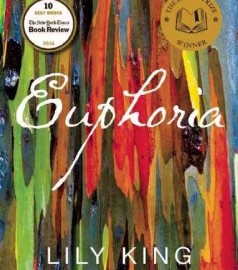
Research, Romance and Ritual-Evening Book Group
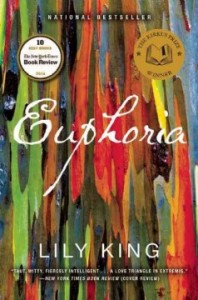 Our Evening Book Group meets once a month on the first Monday of the month. On February 1st we met to discuss Euphoria by Lily King. This novel was inspired by an event in the life of Margaret Mead and it tells the story of three young anthropologists in 1930’s New Guinea. Filled with atmospheric detail, this sensuous story relates how media darling Nell Stone and her Australian husband, Fen, flee one tribe, and, with the aid of English anthropologist Andrew Bankson, settle with the Tam, an unusual, female-centric tribe. A love triangle soon ensues.
Our Evening Book Group meets once a month on the first Monday of the month. On February 1st we met to discuss Euphoria by Lily King. This novel was inspired by an event in the life of Margaret Mead and it tells the story of three young anthropologists in 1930’s New Guinea. Filled with atmospheric detail, this sensuous story relates how media darling Nell Stone and her Australian husband, Fen, flee one tribe, and, with the aid of English anthropologist Andrew Bankson, settle with the Tam, an unusual, female-centric tribe. A love triangle soon ensues.
The majority of people in the book group loved this novel although some were challenged by the frequent changes in the narrative voice. People appreciated the lush descriptions of the landscape, the glimpse into the creative process of writing a book, and the romantic tension between Nell, Fen and Bankson. The cultural portrayals of the tribes and the rhythms of the Tams’ lives were richly evoked and compelling.
Nell’s drive and discipline were admirable – her curiosity and methods of integrating into tribal life were fascinatingly told – her dedication was doubly appreciated once we were aware that financial reward or acclaim was not her goal.
Fen was perceived as nasty and “an awful piece of work.” He was jealous, insecure, sure his wife was more talented than he and financially ambitious in a way she was not. Ruthless in his pursuit of the Flute relic, he sacrificed the life of a beleaguered native and compromised the research Nell and he were working on in exchange for a foothold in the pursuit of his own legacy. The young native’s plight was especially poignant as his time at the mines irrevocably changed him and his relationship with the tribe. While he was away, his memory reached mythic proportions and once back, he remained alone and solitary. It was no surprise that he agreed to participate in the Flute debacle if it meant freedom for his soul.
Bankson, based on the real-life anthropologist Gregory Bateson, is plagued by the deaths of his two brothers – one who died in World War I, the other who committed suicide in Piccadilly Circus. He fled this darkness to the Sepik River, living with and researching a tribe and trying to overcome his depression. On the day that he meets up with Nell and Fen though, stalled in his work and deeply despairing, he is fresh from his own Virginia Woolf–like suicide attempt — in the river, his pockets filled with stones.
This unlikely trio all fall a little in love with each other, and their passion for their work and their lives comes together one night as they invent “The Grid,” a method of arranging nations and tribes according to their character. This, too, is based on an idea that Margaret Mead had but she never formally published as a theory. She called it “the squares,” and later wrote that, “it was the closest I’ve ever come to madness.”
We discussed why the book was titled “Euphoria” and recalled that Nell observed that often two months into fieldwork, when a culture suddenly begins to make sense, “It’s a delusion — you’ve only been there eight weeks — and it’s followed by the complete despair of ever understanding anything. But at that moment the place feels entirely yours. It’s the briefest, purest euphoria.”
We discussed the idea of accurately depicting a different culture when you have insinuated yourselves into their way of life. Nell did not want to just study them, she wanted to feel their way of life too. “If I didn’t believe they shared my humanity entirely, I wouldn’t be here,” Nell tells Bankson loftily. “I’m not interested in zoology.” The idea that subjectivity enters into any observation, that one can’t be simply an observer was debated – we recognized that there has to be some impact. This spawned a joke about The Prime Directive from Star Trek. Here is a humorous examination of that topic you might enjoy.
One reader noted that this novel was set in the same time period as last month’s book group selection Cascade by Maryanne O’Hara but still a world away. Readers felt that the tragic events that finished the book were too sudden and hastily written. It was not a happy novel but an affecting one and definitely worth reading.
Other books mentioned during our discussion included:
- Lost in Shangri-la – by Michael Zuckoff
- The writings of Sy Montgomery, naturalist, adventurer, and author – in particular we spoke of The Journey of the Pink Dolphins
- Grit lit: A rough South reader – edited by Brian Carpenter and Tom Franklin
- My Name is Lucy Barton – by Elizabeth Strout
Movies people spoke about included:
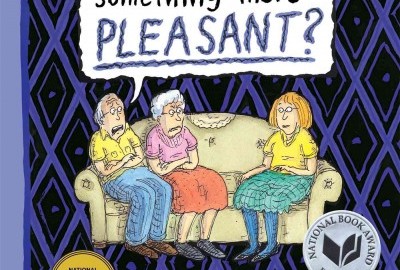
Can’t We Talk About Something More Pleasant?
Our evening book group meets on the first Monday of every month – here is a roundup of what we recently discussed. Check it out and consider joining us next month when we read Cascade by Maryanne O’Hara.
Many in the evening book group were surprised at how much they liked New Yorker cartoonist’s Roz Chast’s memoir “Can’t we talk about something more pleasant?” One member said “It broke my heart – it was too damn real.” Another identified with the author – “I saw myself in her.” The graphic novel format was amazingly effective at conveying the emotions surrounding the care and feeding of elderly parents. While this book followed Chast’s relationship with her parents until their death, it was not ultimately a downer. There were lots of laugh-out-loud moments in the book and so much energy and emotion in the drawings. Chast has a self-deprecating sense of humor and she was very easy to relate to. All felt that the format was very effective for the subject matter.
Paraphrasing one member’s comments: A graphic novel can capture things that are difficult to capture verbally, the format gives you the space to experience your own grief at a distance. You are able to breathe while reading. You read and experience it as you choose to.
Most admired Chast for her honesty and bravery and for really putting herself out there. She shared moments that were personally revealing and not always flattering. We read about her anxiety, her fears, her feelings of being removed from what was happening and her shame over not feeling or doing enough. What we do not hear about is how her husband and children coped at this time in her life. As an author she chose to exclude their story from this memoir. There was some speculation that the book was a form of self-help for the author and it was intensely HER story. She may also have wanted to preserve the privacy of her husband and children by not integrating them into the memoir.
There was admiration for Chast’s drawing style – how she could convey a world of emotions in a simple line drawing and how when the book moved into a darker phase, she was able to change her art to more realistic depictions. The sketches she made of her dying mother were particularly noted as they were so different. As one member said –“There was an honesty to them. The mother was not a hero or a saint, not an angel, just human and real.” The time Chast spent drawing her mother over and over brought her closer to her mother – One member commented “The more you draw ,the more you love what you draw.”
Chast’s parents were together alone for 40 years in the same apartment. They had their ups and downs and the mother’s relationship with Chast was complicated and not always pleasant. Her parents had a codependent relationship that germinated during the Depression era and their frugality and pack rat mentality was a product of that time. We loved seeing the actual photos of the collection of jar lids, the multiple pocketbooks, the ancient gauze bandages and jar of petroleum jelly. You never know when you might need them. We understood the father’s obsession and anxiety with his attaché case of bank books grew out of a time when pennies were dearly counted and tensions were high.
Book Group members appreciated reading about the isolation and frustrations of being the caregiver — the self-doubt, the guilt she felt when she just wanted to give up, the wish that it would all just be over because it was so difficult. For those who are caring for or had cared for and lost a loved one – hearing that those feelings were natural and common was a help.
The inclusion of the actual photos of the parents and saved objects and poems the mother wrote connected us to the memoir in a more concrete way and were a nice accent to the comic drawings. Reading this book naturally spawned conversations about our own parents and the losses we have all endured. We spoke about the emotions tied to objects- how for many of us we imbue them with memories and they can feel like a valued link to the past. This was compared to an immigrant’s experience of fleeing without anything so that objects –things-stuff lose their value and become less symbolic and important.
We also discussed the cultural and ethnic differences in expectations for the caretaking of our elders – how those expectations have changed over the years and we all have begun to live longer. One member said “They say it costs more to die than it does to live.” Another member said – “Can’t we talk about something more pleasant?”
Here is a preliminary list of other graphic novel memoirs you might also enjoy –
Fun Home: A Family Tragicomic by Alison Bechdel
Relish: My Life in the Kitchen by Lucy Knisley
Hyperbole and a Half: Unfortunate Situations, Flawed Coping Mechanisms, Mayhem, and Other Things That Happened by Allie Brosh
Stitches: A Memoir by David Small
Additional books mentioned by readers uring our Monday Evening book group:
The Secret Chord by Geraldine Brooks
Career of Evil by Robert Galbriath (aka J.K. Rowling)
The Short and Tragic Life of Robert Peace by Jeff Hobbs
Did You Ever Have a Family by Bill Clegg
Numero Zero by Umberto Eco
The Unlikely Pilgrimage of Harold Fry by Rachel Joyce
The Hare with the Amber Eyes by Edmund de Waal
A Confederacy of Dunces by John Kennedy Toole
The Leftovers by Tom Perrotta
The Year of Magical Thinking by Joan Didion
Movies and TV series mentioned included:
Bosch – the Harry Bosch series
German Apple Pancake
This is a pancake – just one- you bake and it’s ready all at once for everyone. It can be a special-day breakfast for two or three people, a light, late supper, or even a warm dessert for four to six people.
Pancake
- 3 large eggs
- 3/4 cup milk
- 3/4 cup white flour
- 1/2 tsp salt
- 1 1/2 Tbs butter ( unsalted preferred)
- 1/2 cup thin-sliced apples (optional)
Filling:
- 1 lb. tart, fresh apples (Pippin are great)
- 1/4 cup melted butter
- 1/4 cup sugar
- powerdered cinnamon and nutmeg
Topping:
Preheat the oven to 450 degrees. Beat together the eggs, milk, flour, and salt until very smooth. Add some very thinly sliced apples if desired. In a heavy 12-inch skillet, melt about 1 1/2 tablespoons butter. As soon as it is quite hot, pour in the batter and put the skillet in the oven. After 15 minutes, lower the oven temperature to 350 degrees and continue baking for another 10 minutes, The pancake should be light brown and crisp.
During the first 10 or 15 minutes of baking, the pancake may puff up in large bubbles, If it does, pierce it thoroughly with a fork or skewer.
While the pancake is baking, prepare the apple filling, Peel and thinly slice a pound of apples. Saute them lightly in 1/4 cup butter and add 1/4 cup sugar, Season to taste with cinnamon and nutmeg. The apples should be just tender, not too soft. About 8 to 10 minutes of cooking over a medium flame should be plenty. (The filling can be prepared ahead and reheated just before serving.)
When the pancake is ready , slide it onto an oval platter, pour the apple filling over one side, and fold the other side over. A little milted butter can be poured on if you choose, and the whole thing carefully sprinkled with powdered sugar through a sieve. Serve it at once, slicing pieces off crosswise.
From “The Vegetarian Epicure” by Anna Thomas and highly recommended or an impressive breakfast for friend by Barbara.
Spinach Quiche
for a 9-inch quiche, serving 6
- 2 Tbs minced shallots or scallions
- 2 Tbs butter
- 10 ounces fresh spinach, stemmed, washed, blanched, and chopped
- Seasonings: salt freshly ground pepper, and nutmeg
- The custard: 3 “large” eggs blended with enough milk or cream to make 1 1/2 cups
- 1/4 cup lightly pressed down, grated Swiss cheese
- 9-inch prebaked shell
The spinach. Preheat the oven to 375F. Saute the shallots or scallions briefly in the butter, add the spinach; still over heat until tender. Season, let cool, and blend into the custard.
Filling and baking the quiche. Reserving 2 tablespoons of the cheese, strew the rest in the shell, Pour in the spinach-custard up to 1/4 inch of the rim. Sprinkle on the remaining cheese.
Bake 35 minutes until puffed and brown.
Taken from the Julia Child cookbook “The Way to Cook” and recommended by Lisa.
Baked eggs with smoked ham and toasted hazelnuts
- 2 tbsp (30g) softened butter
- salt and freshly ground pepper
- 4 eggs
- 3 1/2 oz (80g) lightly smoked ham, diced
- 4 tbsp heavy cream
- 8 freshly toasted skinned hazelnuts, halved
Preheat the oven to 325 (170C). Take 4 cocotte molds, preferably glass, about 2 1/2 inches (6cm) in diameter and 2 1/2 inches (6cm) deep, and brush with softened butter. Season lightly with salt and pepper.
Carefully tip an egg into each mold, then scatter the diced ham and spoon the cream over the egg whites. Bake the eggs until cooked to your liking.
Put a cocotte on each plate. Arrange 4 toasted hazelnut halves around each egg yolk and serve immediately.
Blueberry French Toast
- 2 jars blueberry preserves*
- 1 tsp or more of cinnamon
- 5-6 eggs
- 1 1/2 cups of milk
- 1 tsp of vanilla
- cheddar cheese – grated
- 1 stick French bread
Mix preserves and cinnamon together and put on bottom of 13″ x 19″ baking pan.
Mix eggs, milk, vanilla.
Cut French bread into thick pieces and place on top of preserves/cinnamon.
Put grated cheese over top of French bread. Bake at 350 degrees for 30-45 minutes or until top browns.
*Use store brand “all-fruit” to save on price and sugar
Contributed by Maggie. Maggie recommends this for special holiday breakfasts.





